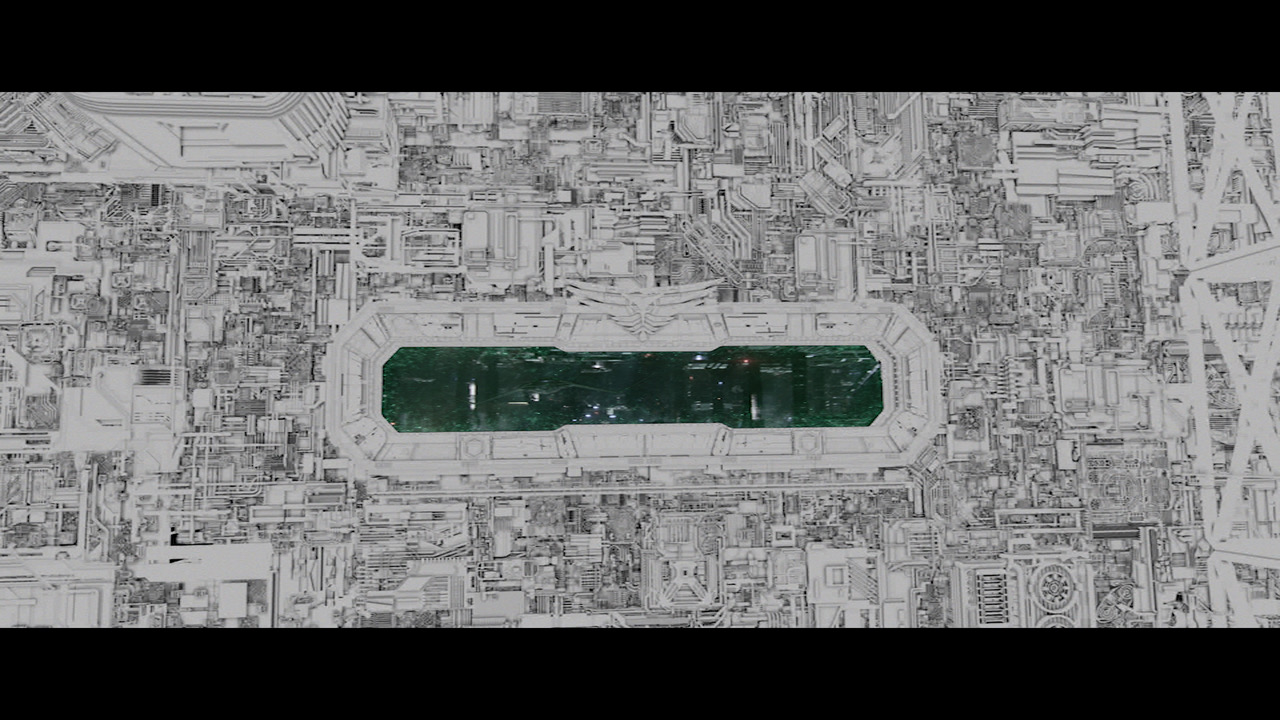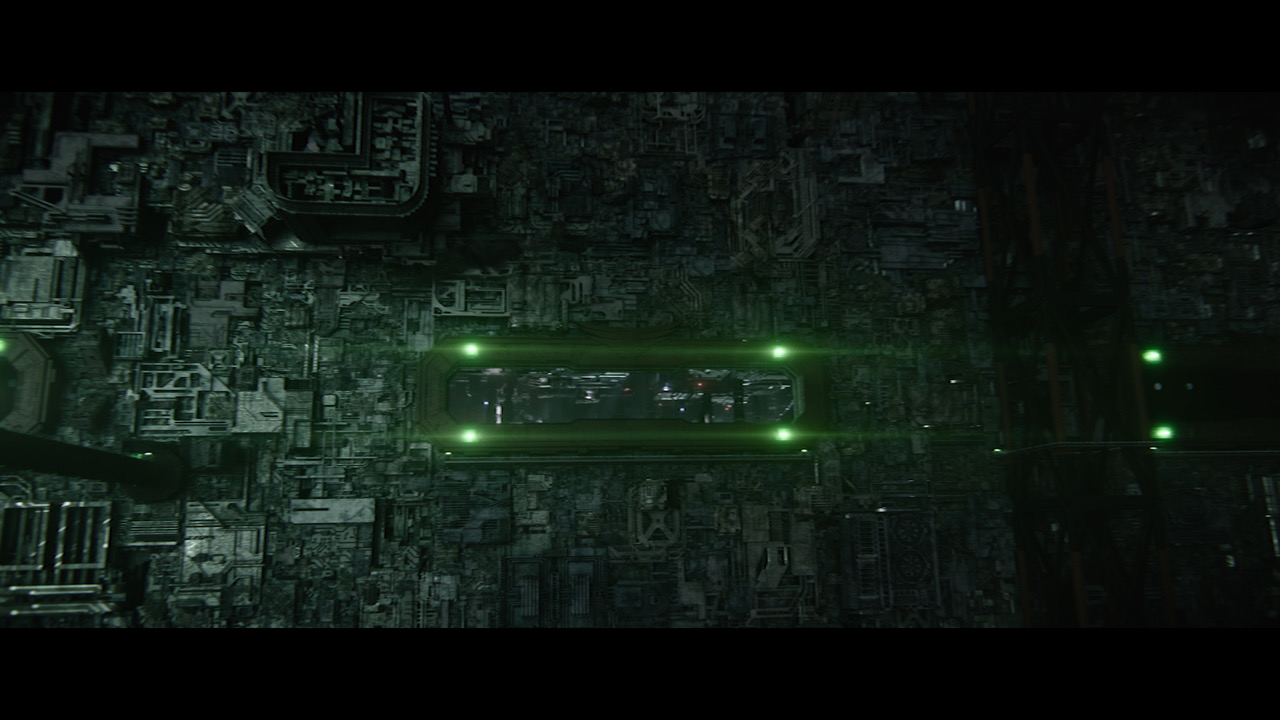Star Trek and Star Wars are two of sci-fi’s biggest franchises, and both properties returned to the spotlight in a big way recently with the Star Trek: Picard and The Mandalorian television series.
Giving these universes a fresh coat of paint is no easy task, and visual effects studio Pixomondo found itself working on both projects over the course of a single year. For Picard, the Pixomondo team was tasked with designing a new Borg cube, one of the franchise’s most iconic — and infamous — interstellar transports. In The Mandalorian, the team worked on another popular spacecraft: The title character’s signature ship, Razor Crest.
Digital Trends spoke to Pixomondo CG supervisor Dan Smiczek about the studio’s work on both projects — as well as a few others — to find out what went into creating these iconic elements.
Digital Trends: Coming into this project, what sort of directives were you given for designing this show’s version of a Borg cube?
Dan Smiczek: Fortunately, we came to the series really early and had a team working with the art department doing 3D models for everything. When it came to the Borg cube, we had some artwork to start with, but it was basically just the general size and shape of the cube and that one area would be damaged and turned into a hangar bay. Beyond that, it was kind of loose. So we had to go back and look at all the different Borg cubes that have shown up in the movies and the TV show and figure out the general elements.
It’s funny, because when you look back on them now, the scale doesn’t feel right with the different giant pieces they had on the cubes. That was one of the things we had to battle with while designing it. With this new cube, we wanted to have the same feeling of, “Wow! It’s a Borg cube!” but we wanted to modernize it. This is a Borg cube we haven’t seen before, after all. It’s assimilated different races, so it has its own flavor and it’s mysterious. You don’t know exactly where it came from, so we had a lot of room to just run with it and design something new.
The Borg cubes are typically defined by lots of right angles, very hard lines, and minute details — like circuit boards. How did that affect your approach to the visuals?
It was a really heavy asset. We ended up building a superstructure with a couple of different shell layers and cutouts that gave it more depth, along with those large pipes in the trenches and the whole hangar bay that was bitten out of it. So we built all that, along with all of the scaffolding and things like that, and it was a lot. The Borg cube is 4.7 kilometers on edge, so it’s supposed to be enormous.
Oh, wow. I didn’t realize that was the official, intended size of it.
Yeah, I’m not sure if that’s out there, but it’s supposed to be 4.7 kilometers on each side. So we knew we had to have a level of detail from far away, but also close up. We did something where we create a “greeble” — which is a fancy term for a very high-detail, small object that you can digitally place on other elements to add more detail to them. So we had a library of 23 different greebles in that Borg style, with right angles, like you mentioned, and very cube-like. We placed them on every surface of the Borg cube to give it this extreme level of detail. In the end, there ended up being around 82.7 billion polygons on the Borg cube we created.
82.7 billion polygons? That’s a lot of detail to account for in any element, let alone one that appears so often in the series…
It is! Thankfully, you don’t see all of that at the same time, but we definitely built it so that you could be right up close to the surface and see a lot of detail. And from far away, you’ll pick up on it, too. That was one of the challenges: When you’re accounting for that kind of size and covering those distances, you have to have large enough details to give it some variety, but not have those details seem repetitive when you get up close, too.
The Borg cube is used in some interesting ways in the show’s first season. Did that present any new and exciting challenges for your team?
It’s funny you mention that, because the original pitch for what happens with the Borg cube at the end of the season was different than what actually ended up happening. For that initial pitch, we were thinking we would have to build it a certain way, but it ended up not going that way in the story, so changing up our original plans presented a kind of challenge.
But one of the biggest challenges for us is that we had to share this heavy, complicated asset with other facilities. Just doing that created its own set of challenges, because after we built this massive asset, we had to figure out how to share it with other vendors for rendering in all of the different methods they used. That was probably the biggest challenge we faced in working on the cube.
While you were working on the cube, did it feel like you were working on a very iconic piece of sci-fi history? Was there some additional pressure there?
Yes, for sure. Early on, we knew we were going to have to show some of it for Comic-Con and that was a lot of pressure. But it’s also funny, because I’ve been doing visual effects for around 20 years now, and all in one year I worked on Star Wars’ The Mandalorian and also on Star Trek: Picard. So after 20 years of doing this, I had the added pressure of trying to replicate what we knew as children about both Star Wars and Star Trek.
But a lot of us are Star Trek fans, so having the Borg cube come into a new series, we wanted to give it the respect that the fans are going to want out of our treatment of it. We treated it like we were the fans that needed to be surprised by this iconic structure showing up, and we really wanted to give it a good take for a new generation.
Is there a particular element or shot from Star Trek: Picard that you’re really proud of?
There is! Working with the art department early on, we created the assets for a lot of the big, iconic stuff for the show, like the La Sirena [the ship that transports the main cast of Picard] — the name changed like four times, by the way — and Seven of Nine’s ship. We got to create a lot of different ships.
There was also that big shot of the Borg cube that we got to do in the first episode, where we start on live action and pull out through the hangar bay, and then down to a full Borg cube reveal. That shot had nearly every asset we worked on in Picard. There were all these Romulan ships that were taking apart the Cube, and I think the entire team that worked on the series touched this shot in one way or another. It was just so satisfying to see it all come together like that. Everyone was really proud of that one.
You mentioned working on The Mandalorian, and Jon Favreau also discussed Pixomondo’s work during an episode of Disney Gallery: The Mandalorian. What sort of work did you do on that series?
One of the biggest identifiable things the LA branch [of Pixomondo] worked on was the pit droids. We also worked on a lot of the Razor Crest [The Mandalorian’s ship] flying through valleys and landing and taking off here and there. It was a real mixed bag of stuff, and it was really cool to be a part of that show.
Oh, we also worked with ILM to take their CGI Baby Yoda and put it into the shots we worked on. Sadly, we didn’t do any Baby Yoda ourselves.

… And you got to cross that one off the list! What else have you been working on lately?
Well, we just finished up Westworld season 3. We did a bunch of work on city skylines there. And we just finished Perry Mason, which premiered on HBO recently.
You went from designing Borg cubes to replacing hair shots. That’s a lot of ground to cover.
It is! And now we’re in season 3 of The Orville. We did a ton of work on that last year, so we’re getting the band back together for that one.
A second season of Star Trek: Picard has been ordered by CBS All Access, and a second season of The Mandalorian is scheduled to premiere in October 2020.
Editors' Recommendations
- How visual effects created Snowpiercer’s frozen world
- How visual effects made The Batman hit harder & drive faster
- How Dune’s visual effects made an unfilmable epic possible
- How visual effects helped Tom Hanks’ robot costar come to life in Finch
- Killer butts and gorilla fashion: How visual effects help Doom Patrol stay weird










